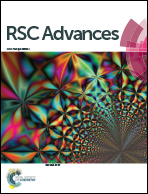Reduction-responsive modification-induced higher efficiency for attenuation of tumor metastasis of low molecular weight heparin functionalized liposomes†
Abstract
For oncotherapy, a delivery system that can effectively prevent and attenuate tumor metastasis is greatly desirable. Herein, we report a novel delivery system of liposomal doxorubicin with a reduction-responsive modification of low molecular weight heparin (LMWH) to realize higher efficacy in the prevention of tumor metastasis. A series of DOX liposomal formulations of crude DOX-Lip, reduction-insensitive LMWH-DOX-Lip and reduction-responsive LMWH-ss-DOX-Lip were prepared. The reduction-responsive modification of DOX liposomes with LMWH chains resulted in higher cellular uptake, higher cytotoxicity of DOX and higher anti-invasion and anti-migration abilities of LMWH compared with reduction-insensitive liposomes, owing to the fast release of DOX and LMWH in the tumor cytoplasm. Meanwhile, the evaluation of heparanase expression was also adopted to reveal the possible underlying mechanism of the effects of LMWH on the attenuation of tumor metastasis. In vivo pulmonary melanoma metastasis assays confirmed the enhanced drug efficacy and lower side effects of LMWH-ss-DOX-Lip compared with crude DOX-Lip or the reduction-insensitive control group. These results may be attributed to the rational design of the drug carriers with a synergistic combination of LMWH moieties and DOX loaded liposomes via reduction-responsive modification.


 Please wait while we load your content...
Please wait while we load your content...